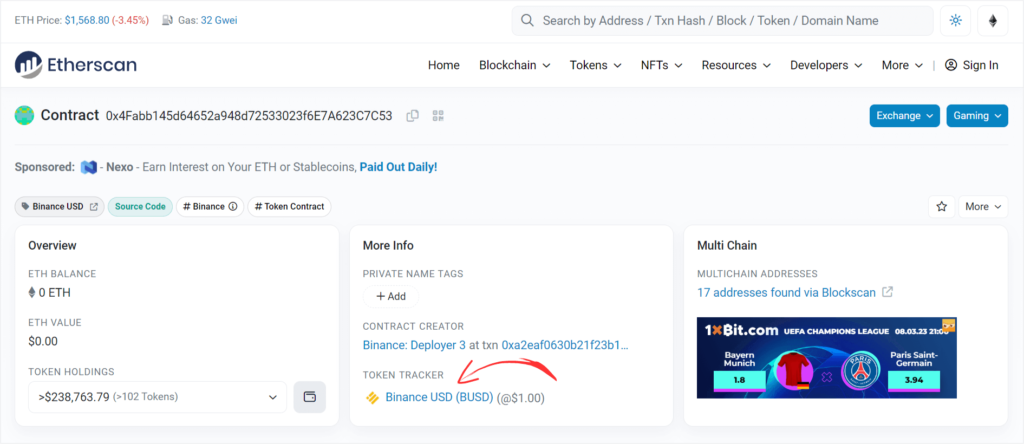BUSD Stablecoin’s Issues + How to Trade BUSD

Third most valuable stablecoin by market capitalization, BUSD stopped being emitted on the 21st February, 2023.
What Is a BUSD Stablecoin?
BUSD is a Binance USD stablecoin, issued by Paxos Global and formerly approved by the New York State Department of Financial Services (NYSDFS).
BUSD is tied to the US dollar on a 1:1 basis.
And a stablecoin in general is a cryptocurrency that’s created to mirror fiat currencies, like the USD. Stablecoins are also pegged or tied to the fiat currency in question and reflect its price, most preferably in a one-to-one manner.
Most often used so that it’s easier to buy and trade regular cryptocurrencies without having to exchange fiat currency to crypto every time.
BUSD Stops Being Emitted
Paxos Global officially announced the news of halting the emission of BUSD to the public on the 13th February, 2023.
The emission stopped on the 21st of February, 2023.
BUSDs issued up until the 21st of February, 2023 will remain tied to the USD and it will be possible to exchange them at least until February of 2024.
The already emitted tokens will remain redeemable and are fully supported by Paxos, as they officially stated.
How to Check If My BUSDs Are Original?
Paxos issued BUSDs on the Ethereurm’s blockchain only.
So, before you exchange your BUSDs for a different token, you need to check the network you’re currently keeping your BUSDs on.
And you can do that in two ways.
Method #1: Check the Fees
The first method to check the blockchain on which your BUSD is stored is to try and send it to a different address.
Once the fees for that operation show up, check which currency they are in. If the fees are to be paid in ETH, your BUSD is stored on the right blockchain.
But if the fees are to be covered using a different token, for example, BNB, it means that your BUSDs are stored on a different blockchain than Ethereum’s one, and therefore, are not supported by Paxos.
Method #2: Use a Blockchain Explorer
The second method is to simply use a blockchain explorer and check some data.
For example, if you were to check BUSD on the Binance Smart Chain, you would see that BUSD stored on it is marked with the Peg value. This means that it’s not the original token, but it’s just tied to it when it comes to its value.

You can check that yourself here.
If you were to check Ethereum’s network using the same method, you will quickly learn that the BUSD stored there is original, because it doesn’t have the Peg value listed in the explorer.

You can check that yourself here.
What to Do to Secure My BUSDs?
If you have BUSDs, you may wonder what you can do now to secure them.
There’s a few steps you should take to secure your BUSDs.
If You Store Your BUSDs in a Wallet
If you store your BUSD in a wallet, you have to first check if they are located on Ethereum’s blockchain, which we described how to do above.
If they’re stored on a different network, it means that you don’t own original BUSDs, but wrapped tokens instead. And wrapped BUSD tokens are not supported by Paxos Global.
Wrapped tokens put simply are like a synthetic version of the original token, in this case, BUSD.
If You Store Your BUSD Tokens on an Exchange Platform
This case is a bit more complicated, because you can’t be sure on which blockchain does your exchange platform keep the BUSDs on. And you can’t really check that yourself.
So, you have to go for different measures.
You can either send your BUSD onto your own wallet address using a secured by Paxos network (ERC20) or exchange the BUSDs to a different stablecoin, for example for USDT or USDC.
How to Trade BUSD?
As of today (2nd of March, 2023), Binance is not supporting BUSD withdrawals.
Here’s their official statement on this situation.
But another big exchange platform, Kucoin, is supporting BUSD deposits and withdrawals. Kucoin uses the BNB Smart Chain (BEP20) and Ethereum (ERC20) networks for such operations.
Now to exchange your BUSD tokens from the BNB Smart Chain to the Ethereums (ERC20) network, you simply have to deposit the BUSDs onto your Kucoin account using the BNB Smart Chain, and then transfer them onto your wallet’s address now using the ERC20, Ethereum’s network.
An Alternative Method
You can also choose to create an account on the Paxos Global website, deposit your BUSDs there, exchange them, and then withdraw the exchanged tokens onto your account’s/wallet’s address.